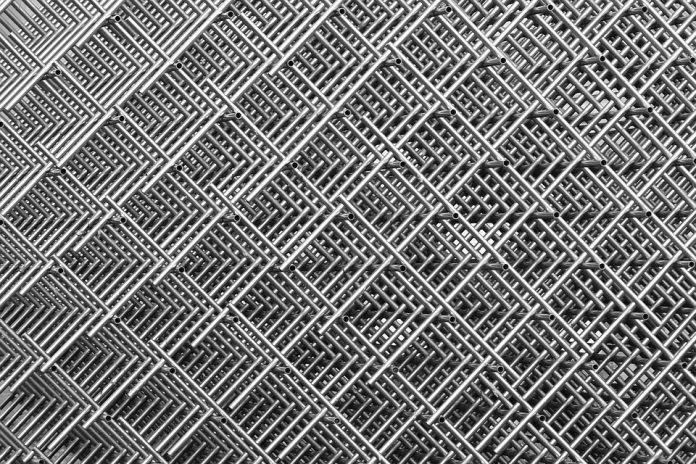The origins of injection molding is phenomenal. Its induction into the metal injection molding process is simple in concept but a complex process. Metal injection molding is a metal working process that mixes finely powdered metal with binder material to create a ‘feedstock’. Feedstock is the threshold to injection molding which allows for its shaping and solidification.
History of Metal Injection Molding
If you compare investment-casting technique to metal injection molding, the latter is a more recently developed process. Take Italy’s Metro cast Italiana for instance. It is the first Italian company, which has since 1995 acted as subcontractor for metal injection molded parts. Despite this, MMI technology still remains quite new not just in Italy but to other countries as well.
Americans were the first to study Powder Injection Molding and referred it back to Ceramic Injection Molding. It was until after the Second World War when these studies struck a ripple effect. By applying the results of the studies to metal powders (Fe-Ni), the first ever-metal injection molded parts were manufactured.

The Russians similarly came up with a process similar to the American’s in the 1950s only that it was only with ceramic powders. If it were not for the ceramics and 1970s applications whose fields required high property components, you probably would not have gotten wind of this molding technique.
Thereafter this technique has spread out all through Japan and Europe as well being a factor by complex shapes, high property components, and metal powders. On the apex of metal injection molding, you will have to implore Raymond Wiech in the United States whom history applauds as the inventor of the metal injection molding process.
Before the process had been rid of its glitches, it encountered the following technological problems. They were resolved in the 1970s and thus becoming industrialized:
- Sintering to dimensional accuracy and high accuracy.
- The need to develop an economic binder removal process to provide shape retention.
- Production of a homogenous mix; power-binder with high metal powder for loading and sufficient viscosity for injection molding.
Its market has grown its proportions; from $9 million in 1986, $ 382 million in 2004 and it grossed more than $1.5 billion in 2015. Its affiliate, ceramic powder injection molding has also grown grossing about $2 billion in total sales. Even though Russia pioneered the art, its Asia that is accorded more of its growth in recent years.
This molding technique is ceramic products ‘loyal’ and the timely intervention of injection molding counters the whole process from turning out as ceramic molding. It cleverly plastifys powdered raw materials; metal powders with the help of thermoplastic additives and uses injection molding to form complex components. Voila, powder injection molding!
Metal Injection Molding Process
A rough scope of the process is combining metal powders with polymers. Polymers are the binders you need to generate the feedstock. It is a seven steps process shown in the below scheme:
-
Metal Powder.
For starters, you combine metal powders with polymers such as wax and polypropylene binders. Initially injection molding was meant for plastic molding and its induction into the metal injection molding ushers in the plastic in the binders.

The metal powder needs to be fine so that its integration with the thermoplastic binder is flawless. If not the pelletized molding compound: the feedstock will ruin the mixture.
-
Plastic binder.
As the name suggests, a binder’s work is to hold other materials together for a perfect chemical or mechanical adhesion. The plastic binder in his case acts as an intermediate processing aid. It acts as a carrier to the metal powder. Moreover, the plastic binder helps acquire the right geometry by injection and thereafter it is no longer in need.
It has to be removed from the product after injection molding. Watch out what properties your plastic binder has because it transcends to the final properties of the metal injection-molding product.
3. Mixing.
Now that we are past the metal powder synchronizing with the polymers, which are binders, we have ourselves a ‘feedstock’ mix. Getting a homogenous mix is now possible because of the 1970s breakthrough and it allows for sufficient viscosity when we get to injection molding.
Using a kneader or shear roll extruder you then work the blended powder mix into the plasticized binder at elevated temperatures.
4. Feedstock.
Feedstock is the intermediate product you get after mixing raw materials with a propylene binder. It is granulated and its granule sizes vary in millimeters, which is common in the plastic injection molding industry.
This feedstock mix is then injected as a liquid using plastic injection molding machines into a mold. As a metal injection-molding producer, you can manufacture feedstock in-house if you have the necessary skills and knowledge. If not you can purchase feedstock as ‘ready to mold’ from international suppliers.
-
Injection molding.
Injection molding is a salvage entirely to the process because it stops the whole process from going ceramic molding. I mentioned that the feedstock mix is injected into a mold, which is then cooled to eject the ‘green part’ or the molded.

This green part formed in the injection molding process is equivalent to the formation of plastic parts. A variety of part geometrics is produced in this process courtesy of the plastic binder. It is as well similar to a great variety of plastic components.
-
Debinding/Binder removal.
The binder removal procedure is of intricate sensitivity because it takes caution not to destroy the shape of the components while obtaining parts with an interconnected pore network.
At the end of the binder removal process, you will often find binder present in the parts, which hold the metal powder particles together. The initial phase of sintering counters this by allowing evaporation of residual binder. This occurs in the pore network and while it happens, the sintering neck starts to grow between metallic particles.
- If not for the sintering process, elimination of residual binder, which covers most of the pore volume, would not happen. As a result metal injection molding parts shrink during sintering. It shrink substantially, usually as high as 15-20%.
Applications of Metal Injection Molding
1. Manufacture of parts for dimensional tolerances.
It is useful in the production of parts that their production cannot be through other means of fabrication.
2. Counters increased costs in traditional manufacturing methods.
This molding technique counters part complexity thus reducing costs due to the flexibility of injection molding.
3. Aerospace
4. Firearms
conclusion
Metal injection molding has come of age and it is more like the 3D printing of machining. It counters traditional manufacturing’s high operational costs and parts complexity. Moreover, you can manufacture feedstock if you have MIM knowledge rather than purchasing it from suppliers.







